
The Congrès Internationaux d'Architecture Moderne (CIAM), or International Congresses of Modern Architecture, was an organization founded in 1928 and disbanded in 1959, responsible for a series of events and congresses arranged across Europe by the most prominent architects of the time, with the objective of spreading the principles of the Modern Movement focusing in all the main domains of architecture.

The Vienna Secession is an art movement, closely related to Art Nouveau, that was formed in 1897 by a group of Austrian painters, graphic artists, sculptors and architects, including Josef Hoffman, Koloman Moser, Otto Wagner and Gustav Klimt. They resigned from the Association of Austrian Artists in protest against its support for more traditional artistic styles. Their most influential architectural work was the Secession exhibitions hall designed by Joseph Maria Olbrich as a venue for expositions of the group. Their official magazine was called Ver Sacrum, which published highly stylised and influential works of graphic art. In 1905 the group itself split, when some of the most prominent members, including Klimt, Wagner, and Hoffmann, resigned in a dispute over priorities, but it continued to function, and still functions today, from its headquarters in the Secession Building. In its current form, the Secession exhibition gallery is independently led and managed by artists.

Werner Seligmann was an architect, urban designer and educator.
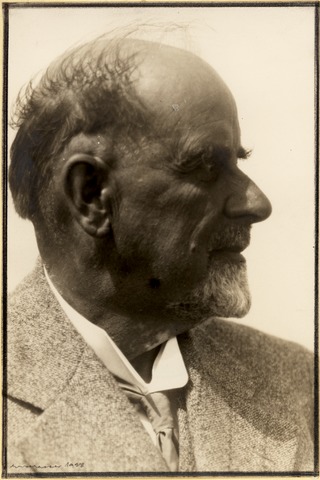
Karl Moser was an architect from Switzerland.
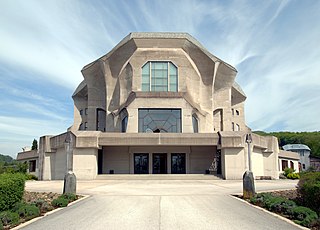
The Goetheanum, located in Dornach, in the canton of Solothurn, Switzerland, is the world center for the anthroposophical movement.

Mart Stam was a Dutch architect, urban planner, and furniture designer. Stam was extraordinarily well-connected, and his career intersects with important moments in the history of 20th-century European architecture, including the invention of the cantilever chair, teaching at the Bauhaus, contributions to the Weissenhof Estate, the Van Nelle Factory,, buildings for Ernst May's New Frankfurt housing estates, followed by work in the USSR with the idealistic May Brigade, to teaching positions in Amsterdam and post-war East Germany. Upon return to the Netherlands he contributed to postwar reconstruction and finally retired,, in Switzerland, where he died.

Koloman Moser was an Austrian artist who exerted considerable influence on twentieth-century graphic art. He was one of the foremost artists of the Vienna Secession movement and a co-founder of Wiener Werkstätte.
Ramses Wissa Wassef (1911–1974) was an Egyptian Coptic architect and professor of art and architecture at the College of Fine Arts in Cairo and founder of the Ramses Wissa Wassef Art Centre.
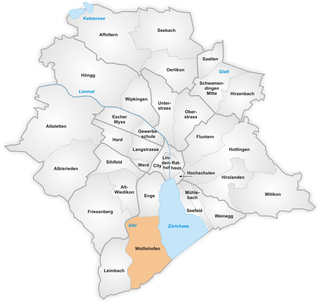
Wollishofen is a neighbourhood in Zürich's 2nd district, situated in the eastern foothills of Uetliberg. It was formerly a municipality of its own, having been incorporated into Zürich in 1893. The neighbourhood has a population of 15,592 distributed on an area of 5.75 km2.

Founded in 1854, the Department of Architecture (D-ARCH) at ETH Zurich in Switzerland is an architecture school in Zürich, providing education in the fields of architecture, landscape architecture, urban planning, and urban design. It has around 1,900 students, 350 staff members, and an annual budget of CHF 40 million.

Haefeli Moser Steiger (HMS) was a Swiss architectural firm, founded by the architects Max Ernst Haefeli, Werner Max Moser and Rudolf Steiger, the office existed from 1937 to 1975 and was one of the most important Swiss architectural firms of the 20th century. In 2007, the Museum für Gestaltung dedicated an exhibition to the office under the title Chair House City – Haefeli Moser Steiger.
Flora Steiger-Crawford was a Swiss architect and sculptor. In 1923, she became the first woman to graduate in architecture from the Federal Institute of Technology in Zurich where she studied under Karl Coelestin Moser. After working with Pfleghard & Haefeli in Zurich, she married Rudolf Steiger in 1924 and established her own firm with him in Riehen, moving to Zurich the following year. Their first project, the Sandreuter House in Riehen (1924), is considered to be the first Modernist house in Switzerland. Steiger-Crawford went on to design individual houses while developing modern furniture, including a stackable metal chair for the Zett House in Zurich (1932). In 1930, she turned to sculpture, terminating her architectural activities in 1938. From 1938, she was a member of the Swiss Association of Female Artists and Sculptors.
The architecture of Switzerland was influenced by its location astride major trade routes, along with diverse architectural traditions of the four national languages. Romans and later Italians brought their monumental and vernacular architecture north over the Alps, meeting the Germanic and German styles coming south and French influences coming east. Additionally, Swiss mercenary service brought architectural elements from other lands back to Switzerland. All the major styles including ancient Roman, Romanesque, Gothic, Renaissance, Baroque, Neoclassical, Art Nouveau, Modern architecture and Post Modern are well represented throughout the country. The founding of the Congrès International d'Architecture Moderne in La Sarraz and the work of Swiss-born modern architects such as Le Corbusier helped spread Modern architecture throughout the world.
Werner Oechslin is a Swiss historian and author.

The Institute for the History and Theory of Architecture is a teaching and research institute at the Department of Architecture of ETH Zurich, situated on the ETH Zurich’s Hönggerberg Campus site.

Trix & Robert Haussmann are an architect and designer duo based in Zürich, Switzerland. Together they founded the General Design institute in 1967.
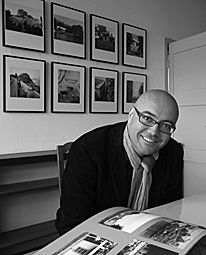
Patrick Moser is a Swiss writer, translator, art historian, and museologist. He is the founder and curator of the Museum "Le Lac" Le Corbusier.

Curjel and Moser was an architectural firm set up by Robert Curjel and Karl Moser in 1888 in Karlsruhe, Germany. They designed about 400 buildings in Germany and Switzerland. In 1915, following the start of the World War I, the firm was dissolved and Moser became professor at ETH Zurich. Many of the office's surviving buildings are now listed monuments. In Karlsruhe-Knielingen, Curjel-und-Moser-Strasse was named after the architects in 2008.
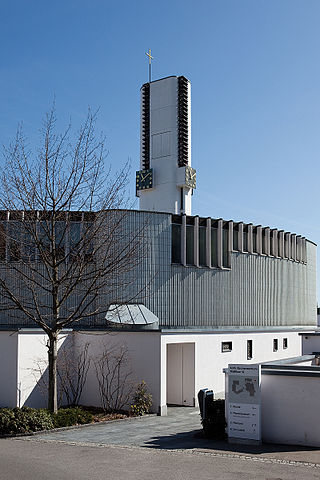
Walter Moser is a Swiss architect. Since 1960 he has worked on sixteen new churches and church complexes in the modern sacral style. Although he is chiefly known for his work for the Roman Catholic church, he has also worked on a number of secular public buildings and developments, and carried out many renovation and restoration projects on "historical" churches in German-speaking German speaking central and eastern Switzerland.
















